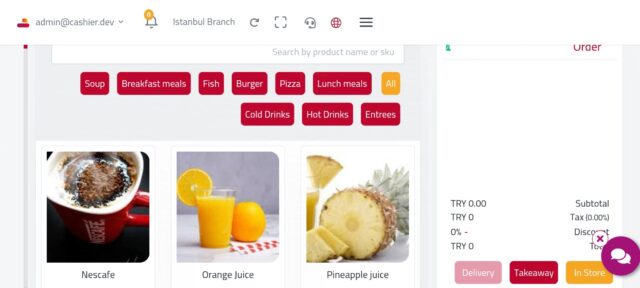Introduction
In today’s business world, many restaurant and café owners strive to enhance customer experience through modern technology that saves time and simplifies the ordering process. One of the innovative solutions that has recently emerged is the Online Menu, which displays the food menu on mobile devices instead of relying on traditional paper menus.
But have you ever wondered about the actual cost of each option? Could an Online Menu be more budget-friendly than a paper menu? In this article, we will provide a comprehensive comparison between the two in terms of cost and benefits.

1. Understanding Online Menu and Paper Menu
Before diving into the cost and benefit comparison, let’s first define each option:
- Paper Menu: The traditional menu that customers receive upon entering a restaurant or café. These menus are usually printed on paper and display the available food and beverage options.
- Online Menu: A digital platform that presents the food menu online. Customers can access it via their mobile phones or tablets by scanning a QR code placed on the table or wall. These menus are often integrated with electronic order management systems.
2. Initial Cost: Paper Menu vs. Online Menu
Paper Menu
The cost of paper menus includes printing and paper expenses, which can be significantly high if frequent updates are required. Restaurants usually offer a wide variety of dishes and beverages, meaning that reprinting may be necessary when changes occur. Printing costs include:
- Menu Printing: A large number of menus must be printed each time, especially in high-traffic restaurants.
- Frequent Updates: Any changes in pricing or new dish additions require printing new menus.
These costs accumulate over time and can become expensive if regular updates are needed.
Online Menu
The initial cost involves designing and developing the digital menu, possibly purchasing software or an application to manage it. Online menu costs include:
- Software Development: If customization or integration with the restaurant’s internal system is needed.
- Operational Costs: Such as website hosting or cloud-based systems to manage the menu.
Although the initial cost may be higher, an Online Menu is generally more cost-effective in the long run due to the elimination of continuous printing expenses.
3. Sustainability and Updates: Which is Easier?
Paper Menu
If you operate a restaurant with a diverse and dynamic menu, a Paper Menu can present several challenges when it comes to updates. Each time you add or remove items, new menus must be printed. Additionally, price changes require printing updated menus, leading to paper waste and sometimes human errors.
Online Menu
On the other hand, an Online Menu makes the updating process significantly easier. You can modify the menu, add new dishes, or change prices at any time without the need for printing. This saves time and effort while reducing paper waste, making it a more sustainable option.

4. Customer Interaction: How Online Menus Enhance Service
When it comes to customer interaction, It revolutionizes the ordering process, offering multiple benefits that improve customer experience. These advantages include:
- Interactive Menu: Customers can browse the menu using their mobile phones, reducing wait times.
- Direct Ordering: Customers can place their orders directly through the system, speeding up the process.
- Order Tracking: Customers can track their orders in real time, enhancing transparency and convenience.
- External Orders: Online menus allow customers to view the menu and place takeout or delivery orders.
Meanwhile, a Paper Menu lacks these advanced capabilities and relies entirely on face-to-face interactions with staff.
5. Hidden Costs: Online Menu Saves More in the Long Run
Although an OM may require a higher initial investment, several hidden costs make it a more cost-effective option in the long run:
- Paper and Printing Savings: By eliminating constant printing, restaurants can significantly reduce paper and ink costs.
- Time Efficiency: Once integrated with order management systems, reduces the time staff spend manually taking orders.
Additionally, there are no recurring costs for reprinting or replacing damaged menus, a common issue with paper menus.
6. Conclusion: Which Option is More Budget-Friendly?
After comparing the costs and benefits of it is clear that the OM is the more cost-effective choice in the long run, especially for restaurants with dynamic menus that require frequent updates. Moreover, it enhances customer experience and reduces hidden costs such as printing and paper waste.
While the initial investment in an Online Menu may be higher, the long-term savings and improved customer service make it a valuable choice. With solutions like Quality Cashier, you can access an innovative and user-friendly Menu that saves time and effort while increasing customer satisfaction—whether for dine-in or online orders.
Are You Ready to Switch to an Online Menu?
If you are considering upgrading your restaurant or café ordering system, now is the time to explore platforms like Quality Cashier, which provides all the necessary tools to create a seamless and efficient Online Menu.








